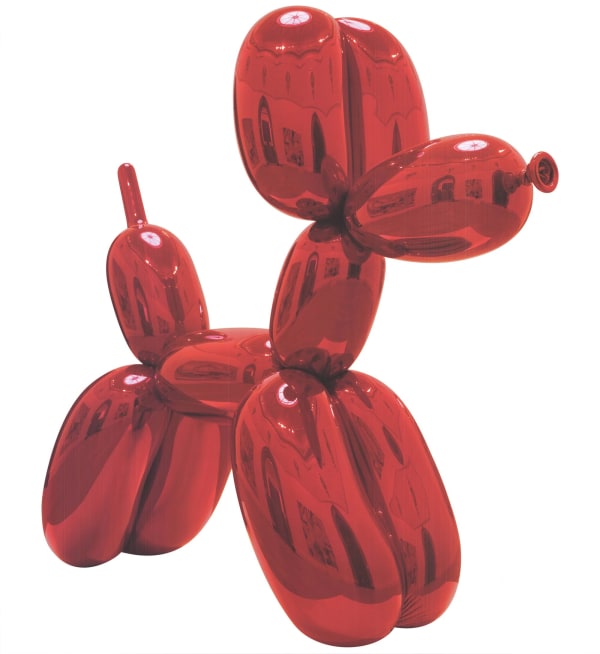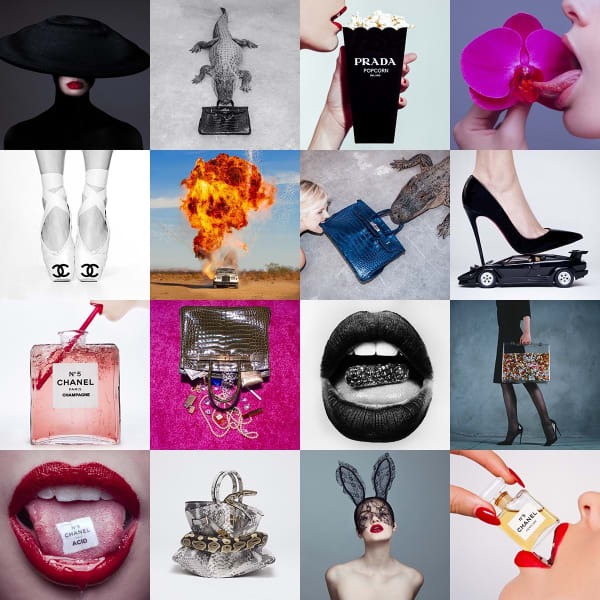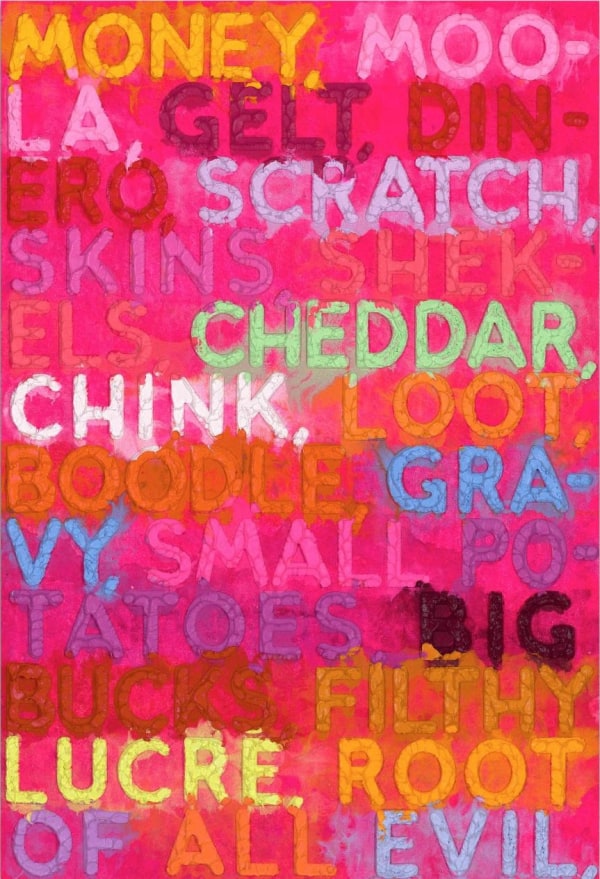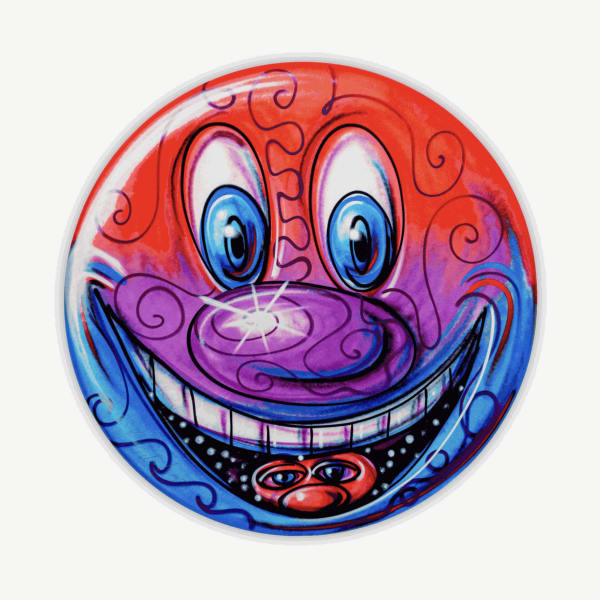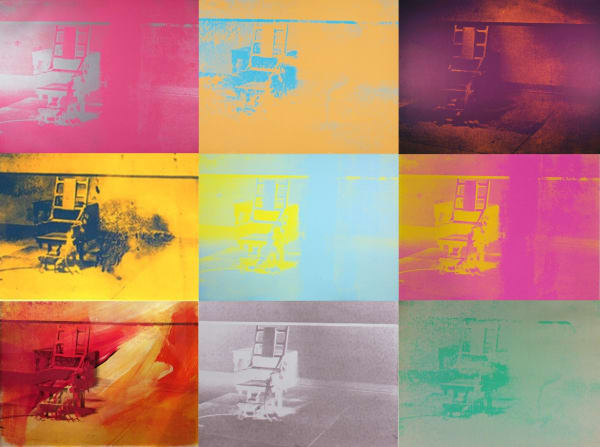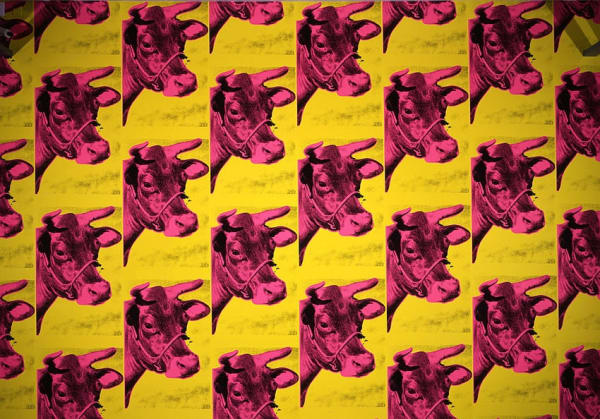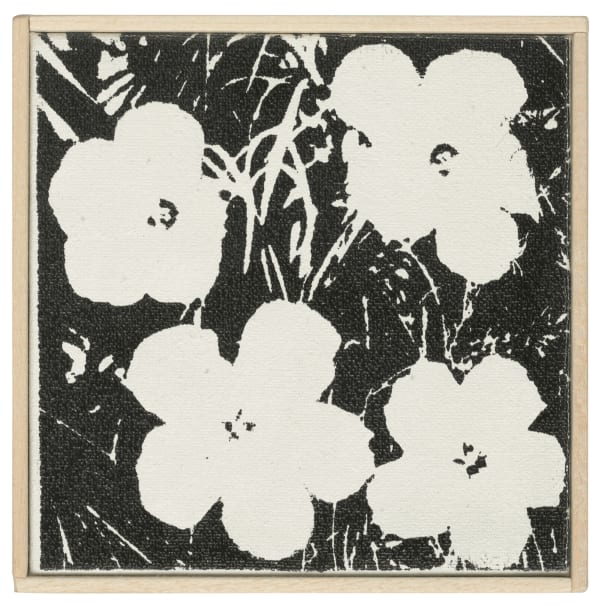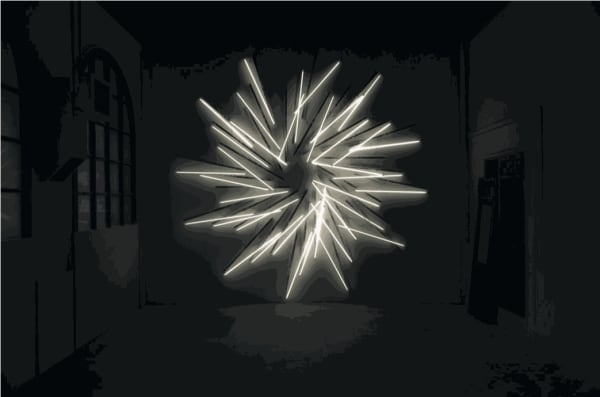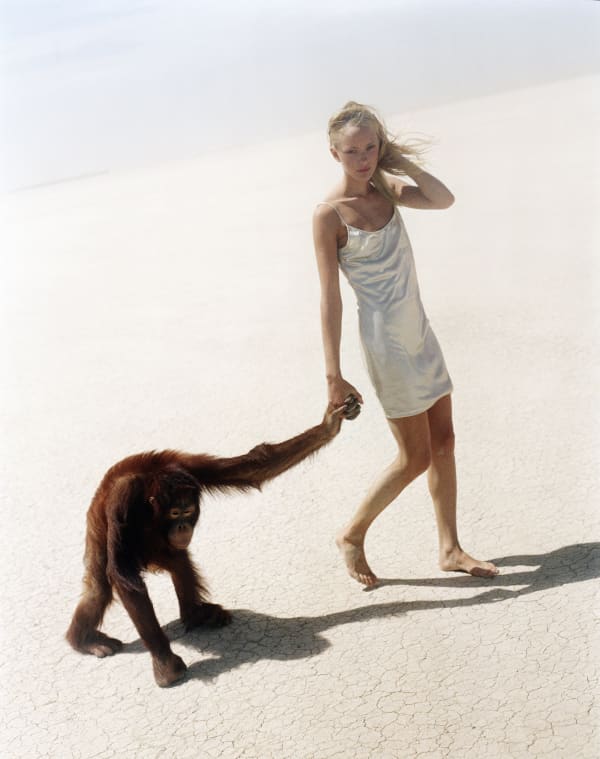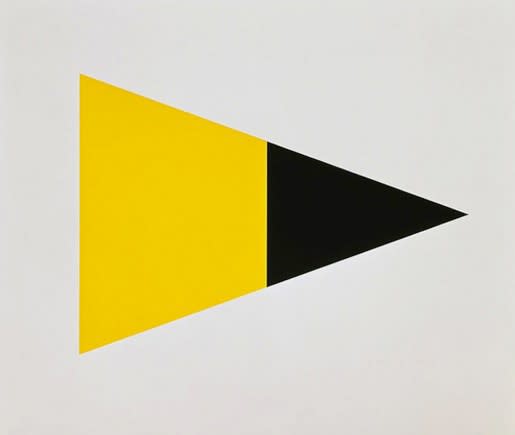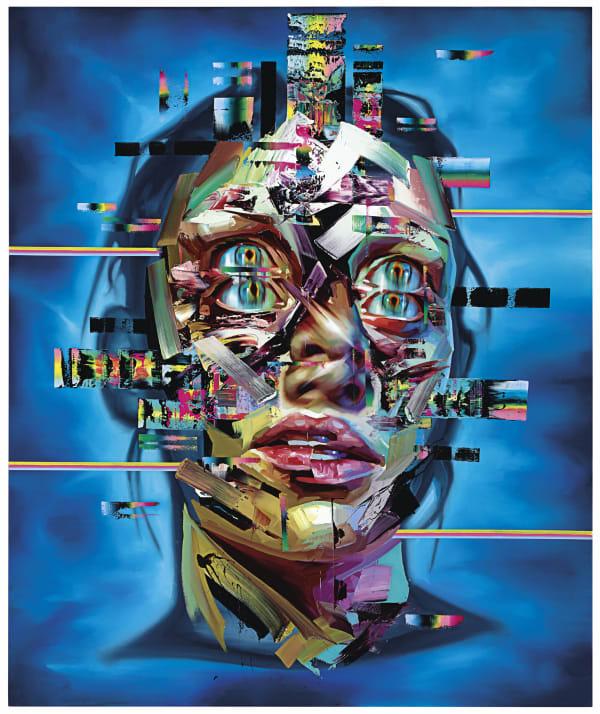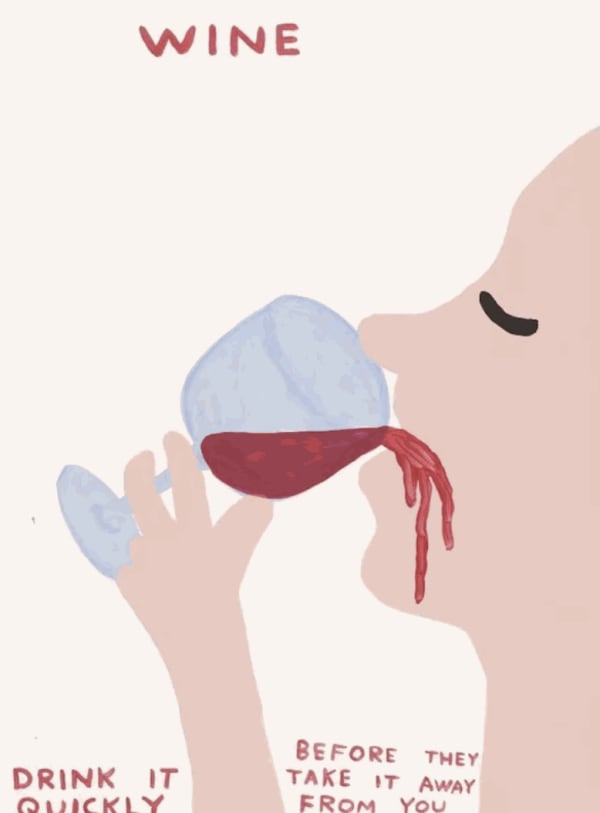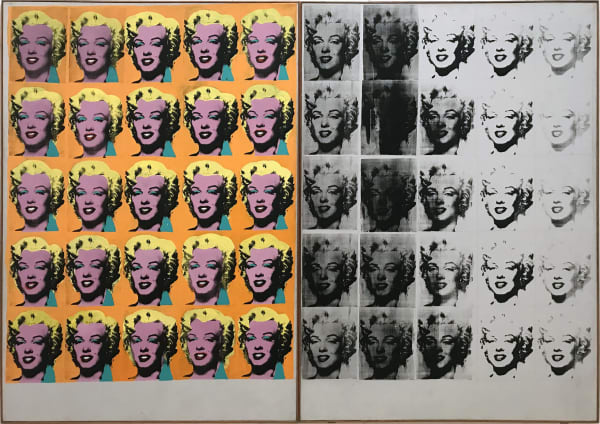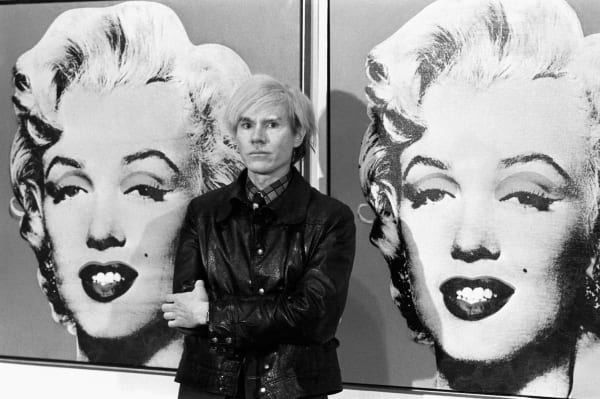-

Keith Haring
In Between The Lines Exhibition May 2, 2024 Best known for his simple, single line designs: humans, dogs, crawling babies, and monsters, most people, even if they don’t... Read more -

Keith Haring Andy Mouse
Keith Haring Andy Mouse May 1, 2024 Exploring the Iconic Collaboration: Keith Haring 's Andy Mouse Print Series Signed by Warhol and Haring In the world of... Read more -

Andy Warhol
Reigning Queens: Queen Elizabeth II April 30, 2024 Andy Warhol's Queen Elizabeth II portraits are comprised of four screenprints published in 1985. The works stand as a testament... Read more -

Damien Hirst
Souls April 30, 2024 Damien Hirst's Souls series presents a captivating exploration of life, death, and the essence of being. Departing from his earlier... Read more
-

Andy Warhol
The Moonwalk Series April 29, 2024 ANDY WARHOL UNVEILED HIS MOONWALK SERIES IN 1987. IT IS A COLLECTION THAT IMMORTALIZES ONE OF HUMANITY'S MOST REMARKABLE ACHIEVEMENTS:... Read more -

Harland Miller
Penguin Book Covers April 29, 2024 Artist and writer Harland Miller has cultivated a devoted following with his polychromatic and graphically vernacular paintings. Infused with cheeky... Read more -

Jeff Koons
Balloon Animals April 29, 2024 Jeff Koons is a major player in the contemporary art world with his distinctive blend of Pop Art, kitsch, and... Read more -

Russell Young's Brigitte Bardot
A Timeless Allure April 26, 2024 Brigitte Bardot: an icon of beauty, grace, and rebellion. Her timeless allure has captivated audiences for decades, inspiring artists, filmmakers,... Read more
-

Tyler Shields Indulgence
The Pursuit of Desire April 26, 2024 In the world of contemporary photography, Tyler Shields stands as a provocateur, constantly challenging norms and perceptions through his lens.... Read more -

JUSTIN BOWER THE MAGICIAN
PRINT RELEASE April 24, 2024 Read more -

KEITH HARING: IN BETWEEN THE LINES
A DEFINITIVE EXHIBITION OF ICONIC ART April 24, 2024 Read more -

YEKA HASKI
DEBUT SOLO EXHIBITION IN NEW YORK April 24, 2024 Read more
-

Roy Lichtenstein: Prints from the 1960s
A Pop Art Masterpiece April 23, 2024 EXPLORING ROY LICHTENSTEIN'S ICONIC PRINTS OF THE 1960S: A POP ART MASTERPIECE ROY LICHTENSTEIN , AN INFLUENTIAL FIGURE IN... Read more -

Auction Top 10 from Print Sales
April 18, 2024 Yesterday's auction spectacle showcased an array of captivating works, with pieces by iconic artists such as Warhol, Lichtenstein, and Basquiat... Read more -

Mel Bochner
Exploring the Dynamic World of Monoprints April 18, 2024 In the realm of contemporary art, few names command as much respect and fascination as Mel Bochner. Known for his... Read more -

Filippo Tincolini
Launching Exclusively at Guy Hepner April 16, 2024 WE ARE PLEASED TO ANNOUNCE OUR FIRST COLLABORATION WITH ITALIAN MARBLE SCULPTOR FILIPPO TINCOLINI. WE ARE OFFERING LIMITED EDITIONS EXCLUSIVELY... Read more
-

Exploring the Kaleidoscopic Universe of Kenny Scharf
A Master of Color April 11, 2024 In the vibrant tapestry of contemporary art, few names resonate with as much chromatic resonance as Kenny Scharf . Renowned... Read more -

David Hockney: Top Auction Lots
April 10, 2024 DAVID HOCKNEY 'S ABILITY TO CAPTURE THE ESSENCE OF LIFE THROUGH COLOR, PERSPECTIVE, AND EMOTION HAS GARNERED HIM WIDESPREAD ACCLAIM... Read more -

Jojo Anavim
Pop Art Reimagined April 9, 2024 In the captivating world of contemporary art, few artists manage to seamlessly blend the exuberance of pop art with the... Read more -

Tyler Shields' Birkin Series
From Destruction to Admiration April 9, 2024 In the realm of contemporary art, few subjects evoke as much fascination and controversy as Tyler Shields . This especially... Read more
-

Andy Warhol
À La Recherche Du Shoe Perdu April 9, 2024 Andy Warhol intricately wove together elements of celebrity, fashion, and everyday objects in his early series À La Recherche Du... Read more -

Andy Warhol
The Beethoven Series April 9, 2024 Within the world of contemporary art, Andy Warhol is a renowned figure known for his innovative approach to subject matter.... Read more -

Andy Warhol A Gold Book
A Glimpse Into Warhol's Early Career April 9, 2024 Andy Warhol , a pioneer of the Pop Art movement, is renowned for his bold and revolutionary approach to art.... Read more -

Andy Warhol: The Birth of Venus Portfolio
Details of the Renaissance April 9, 2024 Renowned for his revolutionary approach to art, Andy Warhol's legacy transcends mere celebrity portraits and cultural commentary. In 1984, Warhol... Read more
-

Faye Dunaway Through the Lens of Terry O'Neill
A Glimpse of Glory April 9, 2024 A deep dive into one of Terry O'Neill's most iconic photographs, Faye Dunaway The Morning After the Oscars. Read more -

Jeffrey Czum: Illuminating the Mundane
A Visual Journey April 9, 2024 Jeffrey Czum , a visual artist whose work intertwines neon texts with familiar scenes, navigates this territory with finesse, inviting... Read more -

Russell Young's Marilyn Crying
Behind the Glamour April 9, 2024 Arguably Russell Young 's most iconic and emotionally resonant work, the 'Marilyn Crying' series stands as a testament to the... Read more -

Andy Warhol
Flash - November 22, 1963 Series April 8, 2024 Andy Warhol's Flash portfolio is a captivating exploration of one of the most significant events in modern American history: the... Read more
-

Andy Warhol
Ladies and Gentlemen April 8, 2024 In the dynamic cultural landscape of the 1970s, Andy Warhol embarked on an artistic endeavor commissioned by Italian art dealer... Read more -

Andy Warhol's Electric Chair
Death and Disaster April 8, 2024 Andy Warhol began the Electric Chair series in 1964, it quickly emerged as a striking testament to his artistic innovation... Read more -

David Hockney's Normandy
April 3, 2024 IN THE REALM OF ARTISTIC ENDEAVORS, INSPIRATION OFTEN STRIKES FROM THE MOST UNEXPECTED SOURCES. FOR DAVID HOCKNEY , IT WAS... Read more -

Andy Warhol
The Complete Mick Jagger Portfolio April 2, 2024 Andy Warhol's artistic prowess and fascination with celebrity culture are epitomized in his Mick Jagger Complete Portfolio, a series of... Read more
-

Andy Warhol Myths Series
Characters of Post War America April 1, 2024 In 1981, Andy Warhol unveiled his remarkable Myths complete portfolio, a collection of ten screenprints that illuminate some of the... Read more -

Andy Warhol's Cow Wallpapers
Rural Imagery Reimagined April 1, 2024 Andy Warhol , a central figure in the Pop Art movement of the 20th century, had a unique approach to... Read more -

David Hockney The 20 Flowers Series
Blooms of Hope March 28, 2024 David Hockney's 20 Flowers Series, created in 2021 iPad Drawings of his Bouquet's of Flowers. Available for purchase at Guy Hepner. Read more -

Orit Fuchs: Life's A Beach
Now on View at The Arlo Hotel March 28, 2024 Guy Hepner is excited to announce Orit Fuchs' vibrant paintings now on view at the Arlo Hotel Midtown through May.... Read more
-

Yayoi Kusama
Infinity In Bloom March 28, 2024 Yayoi Kusama , the renowned Japanese contemporary artist, invites us into a mesmerizing world where flowers transcend their botanical essence... Read more -

Kaws
The News Series March 26, 2024 Renowned American artist and designer KAWS , born Brian Donnelly, ascended to prominence in the late 1990s, navigating the intersection... Read more -

Richard Pettibone
Warhol Inspired Paintings March 26, 2024 Richard Pettibone occupies a significant place within the Pop, Post Pop, and Appropriation Art movements, crafting miniature replicas of iconic... Read more -

Andy Warhol
Sunset Prints March 25, 2024 Andy Warhol's Sunset series, is emblematic of his relentless exploration of color and the graphic potential within the image. This... Read more
-

Andy Warhol
Dollar Signs March 25, 2024 Andy Warhol's artistic legacy is as multifaceted as it is enduring, encompassing a diverse array of works that challenge conventional... Read more -

Andy Warhol Portraits
Who Was Stephen Sprouse ? March 22, 2024 Was there an American fashion designer more precocious than Stephen Sprouse ? He once shared with Interview magazine that he... Read more -

A Q&A with The Pink Lemonade
March 21, 2024 Could you provide some insight into your background as a curator and how it influenced your approach to organizing the... Read more -

Sotheby's: March Print Auction Top Lots
March 21, 2024 Held March 20 at Sotheby's London, the Prints & Multiples sale showcased the best of contemporary and pop printmaking with... Read more
-

Brock Davis: A Whimsical Approach
The Art Of iPhone Photography March 14, 2024 Brock Davis is a contemporary artist known for his innovative and whimsical approach to iPhone photography. Born and raised in... Read more -

Eliana Marinari: Sfumato
Blurring The Boundaries Between Reality And Fantasy March 14, 2024 Geneva-based artist Eliana Marinari specializes in crafting abstract and emotive portraits and floral landscapes. Her works, composed of layers of... Read more -

Nøne Futbol Club: The Artist's Approach
The World As A Playground March 14, 2024 My collective name and its logo reflect the transversality of my practice and the plurality of my fields of action.... Read more -

Russell Young's West
Unveiling the Prisms of American Mythology March 14, 2024 Russell Young 's Western Series emerges as a testament to the primal instincts and grandiose dreams deeply ingrained within the... Read more
-

Keith Haring
Pyramids March 13, 2024 Keith Haring fearlessly tackled the socio-political issues of his era in his art, standing against racism, homophobia, apartheid in South... Read more -

Basquiat Estate Prints
A Guide To Investment March 12, 2024 Basquiat , from his early days in street art to achieving gallery stardom, illuminated a path for his contemporaries in... Read more -

Dylan Martinez: Water Balloons
Triggering Childhoods Nostalgia March 11, 2024 Guy Hepner is pleased to unveil Dylan Martinez's latest series Water Balloons. Beyond their technical and conceptual merits, Martinez's sculptures... Read more -

Jeff Muhs: Dynamic Free Casting
Redefining The Sculptural Process March 11, 2024 Jeff Muhs is known as an innovative painter and sculptor, working in a variety of genres and mediums. Continually inspired... Read more
-

David Hockney: Early iPhone and iPad Drawings
Pioneering Digital Creativity March 8, 2024 David Hockney, an iconic figure in the art world, embarked on a groundbreaking journey into the digital realm through his... Read more -

Kerry Skarbakka: The Struggle to Right Oneself
Capturing the Precariousness of Life March 8, 2024 In the world of photography, there are artists who dare to push the boundaries of visual storytelling, creating works that... Read more -

Suzanna Scott: Bind, Stitch and Layer
Exploring Identity, Gender And Societal Constructs March 8, 2024 Suzanna Scott's artistry delves deep into the intricacies of the human form, transcending mere physicality to explore the very essence... Read more -

Yokoteen
Friends in Paradise March 8, 2024 Since 2015, Yokoteen has been creating his vision of the world with his signature characters, surrounded by lucious and tranquil... Read more
-

Michel Comte's Beauty and the Beast Series
A Captivating Exploration of Contrast March 7, 2024 Swiss-born photographer Michel Comte is renowned for his ability to capture the essence of his subjects, infusing his work with... Read more -

The Enduring Legacy of Robert Mapplethorpe
Capturing Controversy and Beauty March 5, 2024 Robert Mapplethorpe , the controversial photographer whose work continues to stir both admiration and debate, left a profound mark on... Read more -

Tyler Shields' Signature Red
The Power of Color in Photography March 5, 2024 Tyler Shields Signature Red, featured in photographs such as Dorothoy's Night Out, Ferrari Legs, YSL Lipstick and more. Read more -

Alex Katz: Exploring the Elegance and Simplicity of his Flower Series
A Deeper Look March 5, 2024 Alex Katz , an American figurative artist, is widely celebrated for his distinctive style and bold contributions to contemporary art.... Read more
-

Daydream: A Curatorial Partnership With The Pink Lemonade
March 5, 2024 Guy Hepner is pleased to present 'Daydream' curated by The Pink Lemonade opening March 21st in New York City. Featuring... Read more -

Peter Doig: The Evolution of a Visionary Artist
More than the Canvas March 5, 2024 Peter Doig , born in Edinburgh in 1959, is a contemporary artist whose work has left an indelible mark on... Read more -

Andrew Orloski: Sculpting Stories
Merging Tradition With Innovation March 4, 2024 In the world of contemporary sculpture, Andrew Orloski's creations stand as captivating narratives carved in stone, metal, and wood. From... Read more -

Leeah Joo: Crafting Illusions
Drapery As A Still-Life Motif March 4, 2024 Leeah Joo's artworks celebrate the beauty and rich traditions entwined with Korean textiles, infused with cross-cultural references that deepen their... Read more
-

Ellsworth Kelly
Distilling Complex Visuals March 2, 2024 Ellsworth Kelly's curiosity towards geometry was fundamental to his artistic vision and played a central role in shaping his iconic... Read more -

Elton John Through the Lens of Terry O'Neill
Shooting Stardom March 1, 2024 In the world of iconic collaborations, there exists a captivating intersection where music meets imagery, personified by the enduring partnership... Read more -

Justin Bower: Intersecting Technology and the Human Experience
A Closer Look March 1, 2024 Justin Bower has carved a distinctive niche in the contemporary art scene with his unique and thought-provoking creations. Born in... Read more -

David Shrigley's Witty Humor
The Most Sarcastic Artist February 28, 2024 David Shrigley , the British artist renowned for his dark humor and irreverent wit, has earned the title of 'The... Read more
-

Andy Warhol Marilyn Monroe
The Artist's First Screen Prints February 27, 2024 The first of his screen prints, Andy Warhol's Marilyn Monroe series (created in 1967) are motley variations of the iconic... Read more -

Andy Warhol's Campbell's Soup Cans
The Iconic Series February 27, 2024 Andy Warhol's Campbell's Soup Cans are among American modern art's most iconic images. Originating as a series of thirty-two canvases... Read more -

Andy Warhol: Highest Selling Paintings at Auction
February 27, 2024 Andy Warhol , the iconic figure of the Pop Art movement, continues to captivate audiences and dominate the art market... Read more -

Banksy
About the Artist February 27, 2024 Banksy , the pseudonymous street artist whose provocative and politically charged works have captivated audiences worldwide, operates within a complex... Read more
-

Keith Haring
A History of the Artist February 27, 2024 Renowned for his vibrant and socially charged artworks, Keith Haring developed a distinct visual language infused with signs and symbols,... Read more -

Donald Judd
Auction Highlights February 26, 2024 Donald Judd , renowned for his minimalist aesthetic and innovative approach to art, has seen several of his works achieve... Read more -

Donald Judd A Minimalist Approach
February 26, 2024 Donald Judd , an influential figure in the realm of contemporary art, revolutionized the landscape with his minimalist approach. Born... Read more -

Gerhard Richter
Diving Into The "Cage" Series February 26, 2024 Gerhard Richter's 'Cage' series stands as a testament to his artistic versatility and philosophical depth. Created between 2006 and 2007,... Read more
-

Gerhard Richter
At Auction February 26, 2024 Gerhard Richter's auction history boasts remarkable milestones, underscoring his status as a leading figure in the contemporary art market. Several... Read more -

Jean-Michel Basquiat
Setting Records - Highest Selling Artworks February 26, 2024 Jean-Michel Basquiat's artworks, resonant with commentary on race, identity, and society, continue to hold profound relevance amidst contemporary socio-political dialogues.... Read more -

Russell Young: Shadows of Stardom
Fame, Desire, and Tragedy February 26, 2024 Contemporary artist Russell Young unveils his latest series, a captivating body of work that delves into the complex interplay of... Read more -

Takashi Murakami
Top Artworks Sold At Auction February 26, 2024 Takashi Murakami's indelible mark on the art world is evident in his creative ingenuity and the soaring prices his artworks... Read more
Page
1
of 2






